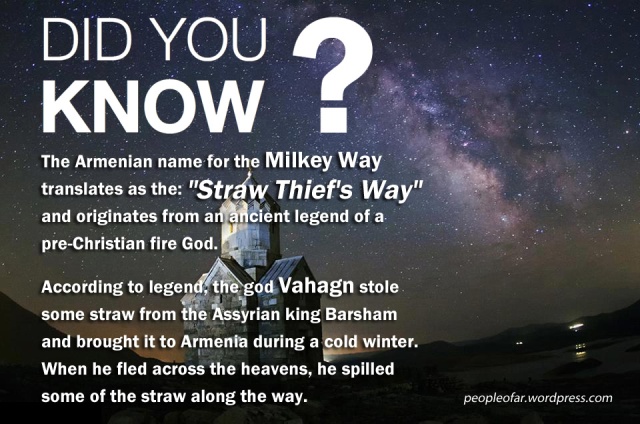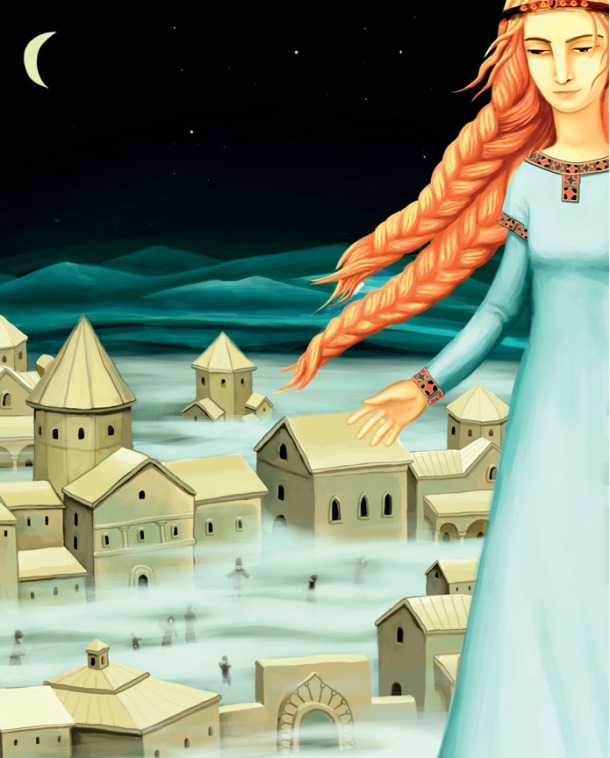The ancient Armenians had a refined knowledge of astronomy. The oldest known observatories are located in Armenia. Dated as early as 4200 BCE, Karahunj and the ca. 2800 BCE observatory at Metsamor allowed ancestral Armenians to develop geometry to such a level they could measure distances, latitudes and longitudes, envision the world as round, and were predicting solar and lunar eclipses about 1000 years before the Egyptians began doing the same. One can find all types of monuments and petroglyphs, written manuscripts and astronomical terms created in the Armenian language thousands of years ago, attesting to the rich knowledge of astronomy by the ancient Armenians.
Every Armenian villager since childhood knows the name of the Milky Way. It can be translated as “the way of a man who had stolen the straw” or the “straw tief’s way”. This proper noun comes from the pre-Christian Armenian legend devoted to the god of fire – Vahagn. It is noteworthy that this name is rather old and is cognate with the words “vah” and “agn” in the Sanskrit meaning a god and a fire. The old Armenian legend recorded by Movses Khorenatsi tells the story of Vahagn who contrived to steel some straw from Assyrian king Barsham once in a very cold winter and brought it to Armenia. According to this tale Milky Way was originated as some part of the stolen straw has been dropped on the heaven in Vahagn’s back way. Vahagn himself was birth into existence by fire from out a reed straw, as the song of his birth recounts:
In travail were heaven and earth,
In travail, too, the purple sea!
The travail held in the sea the small red reed.
Through the hollow of the stalk came forth smoke,
Through the hollow of the stalk came forth flame,
And out of the flame a youth ran!
Fiery hair had he,
Ay, too, he had flaming beard,
And his eyes, they were as suns!
Source:
Hayk Harutyunyan, Byurakan Observatory




